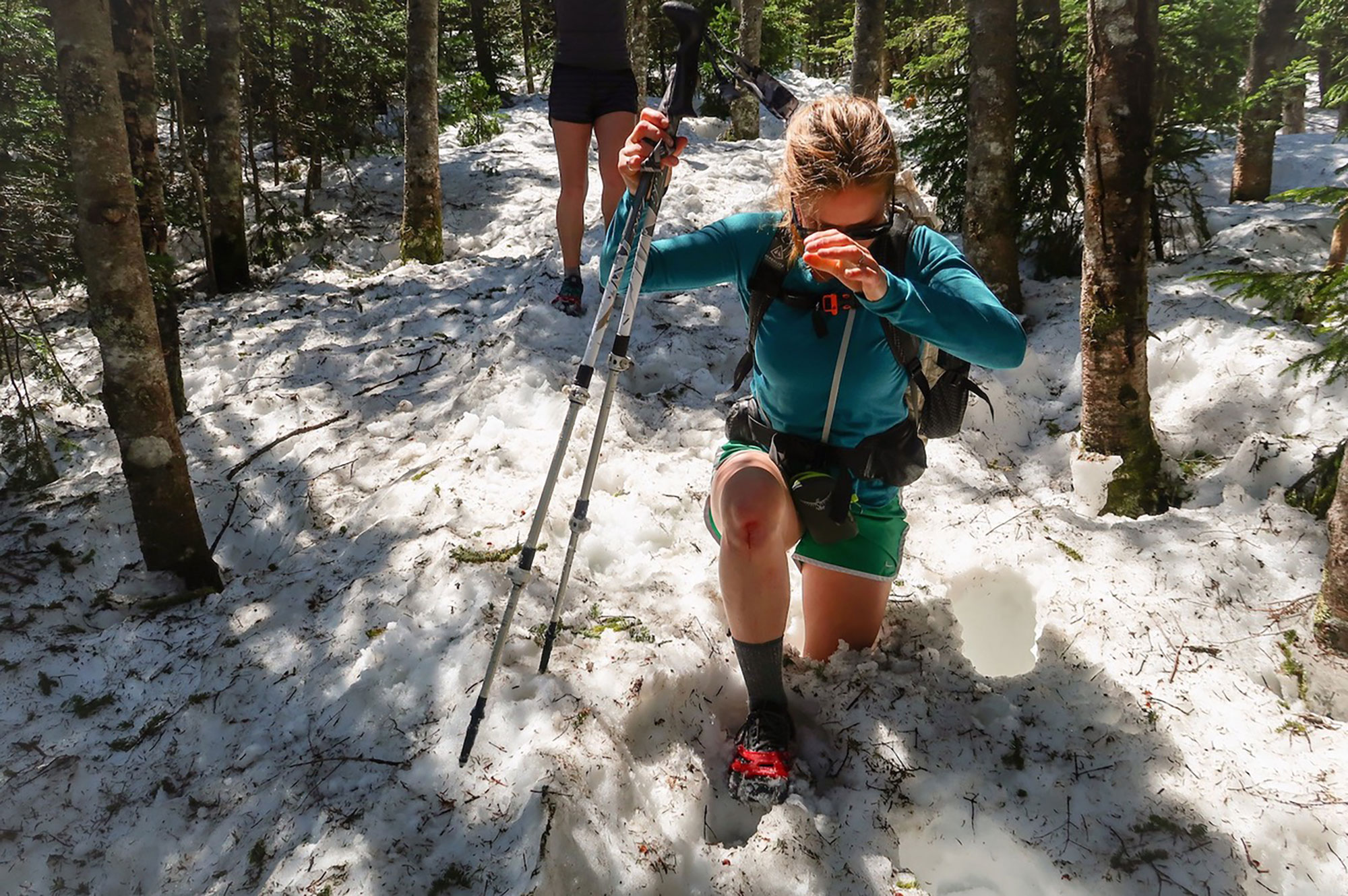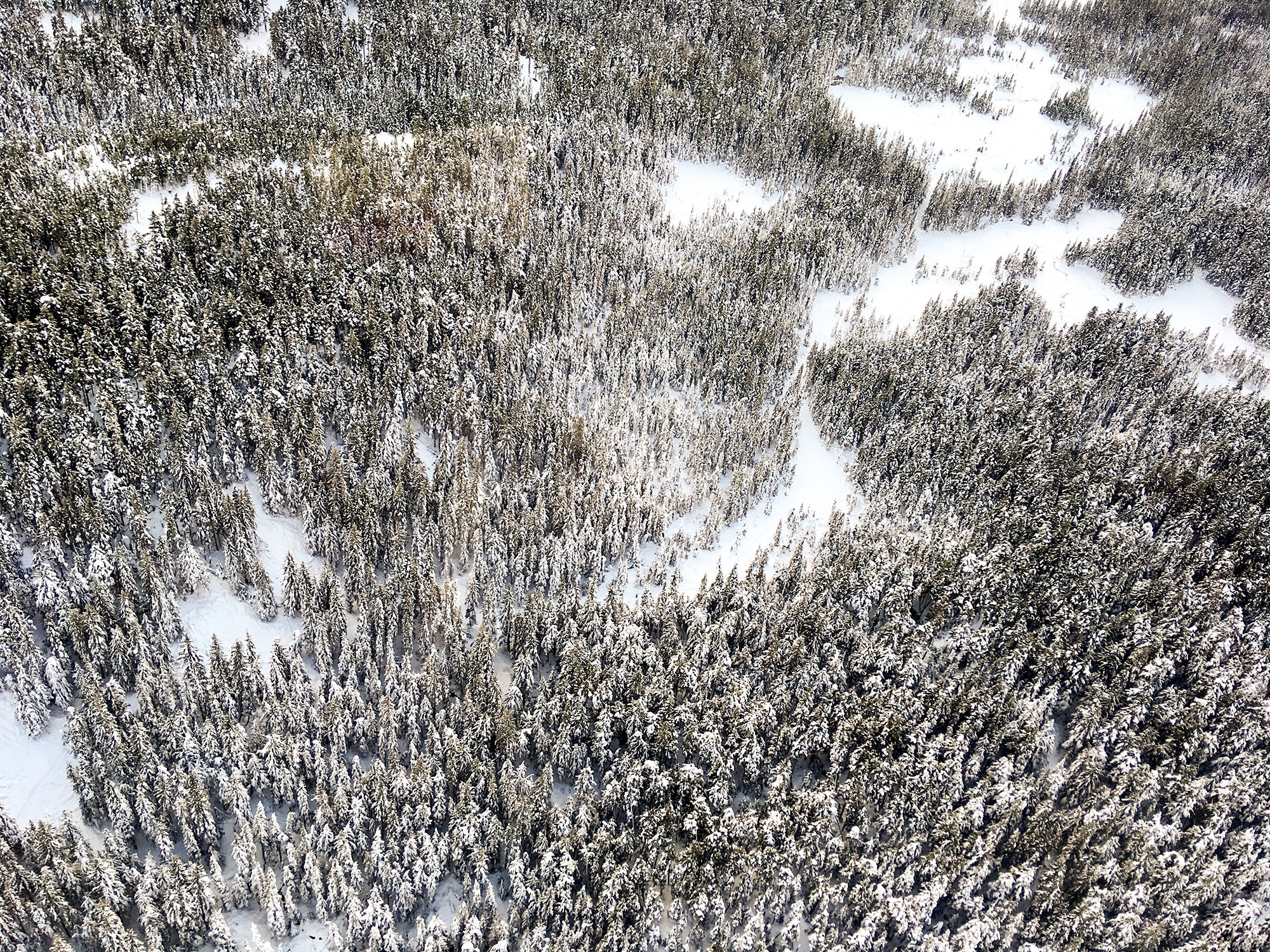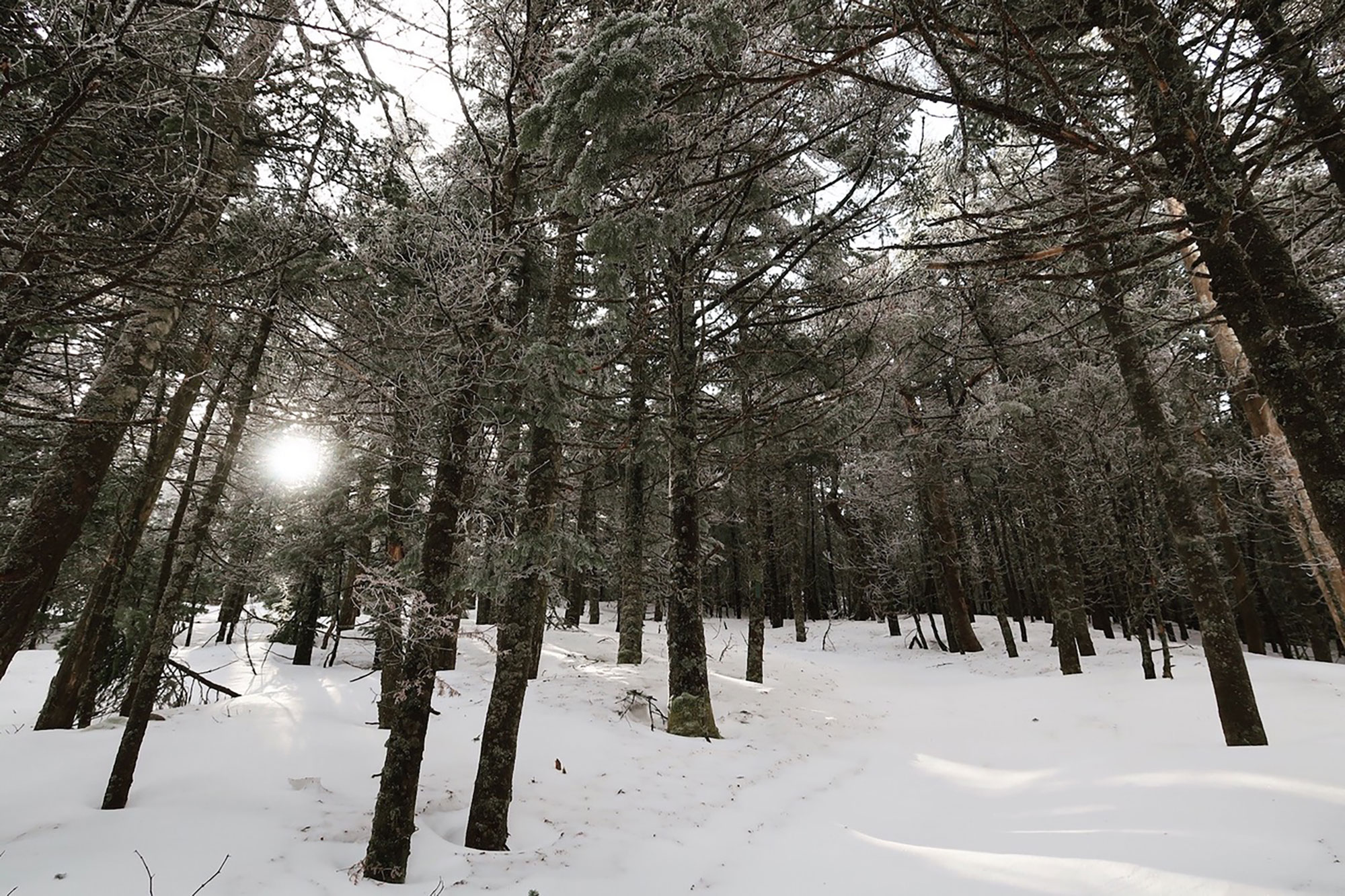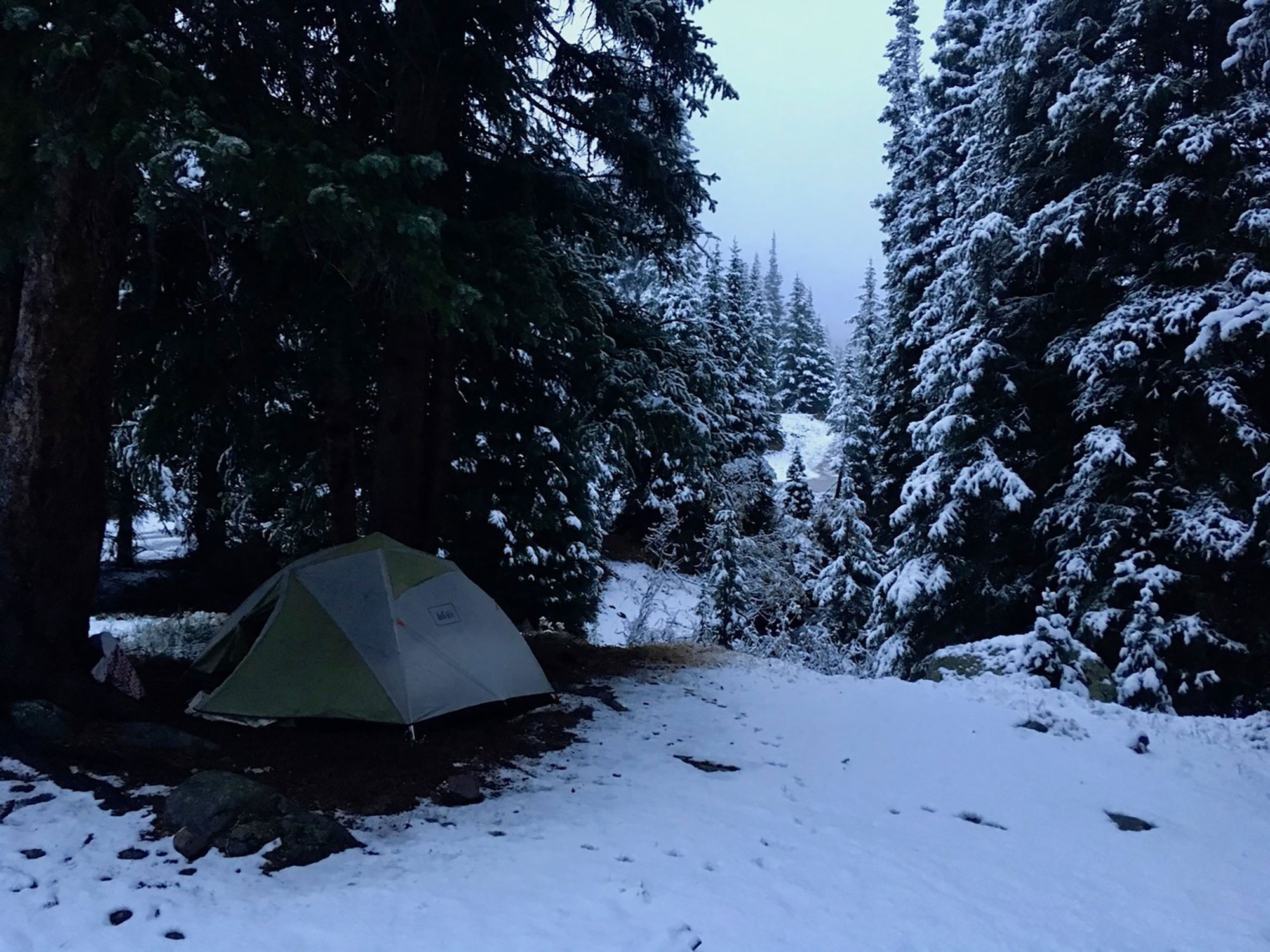Backcountry use in the winter is gaining popularity, and for good reason: The solitude is greater, the views are wider (when the weather cooperates), and there are fresh, beautiful layers of powder to play in. Advances in backcountry skiing and snowboarding equipment and better access to Federal and Public Lands have driven more people to become cold-weather outdoor enthusiasts.
But all this increased use can lead to greater impacts on the landscape, wildlife and others seeking similar experiences. Winter can leave resources and wildlife more vulnerable to the damage of recreational users and there have been cited issues with trash, human waste, excessive noise and disturbances to wildlife that can be easily avoided with some knowledge of Leave No Trace principals.
In general, Leave No Trace encourages visitors of the backcountry to treat the outdoors with respect and limit the impacts of recreation on the environment and wildlife within it. For the most part, the guidelines are pretty straightforward and can be applied to varied seasons and conditions, but there are a few changes you should be making to your LNT practices in the winter.

Planning & Preparation
Planning ahead is especially important in the winter because it increases our safety and enjoyment while minimizing damage to vulnerable backcountry resources. Poor planning or underestimating conditions can result in putting yourself at risk and lead to damaging natural and cultural resources. Venturing outside in the snow is attached to higher risk. Extreme temperatures and wind, fast-changing weather, elevation and avalanches can lead to emergencies like frostbite and hypothermia. To manage your risk and prevent environmental damage, take the following actions:
- Educate yourself on conditions in the area you’ll be traveling and always ensure you’re prepared with appropriate gear and proper clothing.
- Monitor snow conditions frequently. The night before, the morning of, and at the trailhead if you’re able.Mountain-Forecast.com is a great resource to find accurate reports for specific peaks or mountain ranges. Weather can change quickly in the mountains and understanding your timeframe can be crucial. Wind draws heat from our bodies, making it feel much colder than it is, so be sure to check the wind speed too. Prepare for extreme weather by bringing extra layers, a headlamp, emergency hand warmers, and fat-heavy snacks.
- Don’t rely on electronics for navigation. Keep headlamps, phones or other battery-operated devices close to your body heat and consider carrying an portable battery pack if you’re out overnight. Choose waterproof maps and have an excellent understanding of how to read them.
- Backcountry skiing preparedness is a bag I won’t open here, but you should be highly experienced and carry proper emergency equipment (avalanche beacon and shovel).
- Don’t go out alone and always let someone know what your plans are. Even the experienced outdoorsman or woman shouldn’t take on ambitious routes solo in winter conditions.

Backcountry Waste
Ever come across a wad of toilet paper alongside a popular trail during the Spring melt? It’s not pretty, and certainly not ethical. In the winter months, we need to give extra consideration as to how we pack out our trash and human waste during backcountry visits. Human waste (poop!) has serious impacts on ecosystems, so we need to do our best to properly dispose of it to ensure the area is not compromised when the snow melts. While the objectives of proper human waste disposal are pretty straightforward—minimize chances of polluting water sources and spreading disease, while promoting healthy decomposition—this can be much harder in the winter due to the temperature:
- Use established toilets when possible. Some land management areas will continue to maintain trailhead and backcountry facilities in the winter. Research prior to your trip.
- Scatter your liquid waste. Always urinate away from the trail and established camps. To help naturalize the area, throw some fresh snow on top (for your dog too).
- Be prepared to carry out your poop. That’s right, the best way to Leave No Trace is to take ALL of your waste with you. Decomposition of solid waste is much tougher in the winter months and the ground is much too cold to dig a proper hole, so instead it ends up in a pile of snow. It simply freezes until the snow melts and results in potential ecological damage and spread of disease. The best way to dispose of waste in a sanitary and socially acceptable way is by using a WAG Bag (which contains a gel to help break down waste), or something similar. It’ll likely freeze inside the bag, making it easier to pack out until you reach a trash receptacle (not a pit toilet). Dogs typically don’t do their business in the proper LNT area, so it’s especially important to carry theirs out too. Check out the Poo Vault for safe and odorless packability. Check local regulations for recommended methods on high peaks.
- Dig a cat hole as an alternative. At the very least, human and dog waste needs to be buried in a 6- to 8-inch cat hole at least 200 feet from water sources, camp, and trails. Be aware if you’re in a direct drainage where water will flow in the spring by looking at the vegetation and slope of the surrounding area. All toilet paper should be packed out in a separate ziplock covered in duct tape to help be discreet.
- Pack out all trash. Minimize your waste and weight by choosing foods that won’t freeze and repackaging when necessary. Always carry extra ziplocks to pack all of your food waste out, this includes compostable food scraps like apple cores, fruit pits and banana peels. Practice good trail karma by picking up any micro-trash (small pieces of wrappers) left behind by others and help keep spring runoff free of plastic.

Path of Travel
We are simply visitors of the backcountry and we want to avoid any damage to the land as we travel through it. While it may appear that surface vegetation is protected by snow in the winter, the routes we take now will impact the trail later. By traveling on packable snow we can prevent soil erosion and the development of unintended trails.
- Travel on durable or packed snow. By packing down deeper snow or walking on ice (using MICROspikes), the surface vegetation underneath is left unimpacted and our tracks will simply melt away come spring. If you’re breaking trail, gently shake snow-weighted trees and avoid avalanche paths, steep slopes, cornices and other unstable snow.
- Separate ski and snowshoe tracks. Be courteous to others by establishing hiking, snowshoeing or biking paths separate from skin tracks used by uphill skiers and split-boarders. When ascending, yield to downhill traffic. If you are a skier or snowboarder, courteously avoid coming down the hiking trail.
- Avoid creating new trails. In muddy spring conditions, do your best to stay on the snow, or walk in the middle (yes, in the mud!) to avoid creating new paths and damaging trailside plants. Watch out for thin snow where you may fall through.
- Respect other adventurers. While the camaraderie of groups in the outdoors is a powerful thing, many skiers/riders/hikers/mountaineers come for the solitude. Keep noise to a minimum and help promote a cooperative, supportive culture by sharing safety information offering help when needed.

Camping
The great thing about camping in the winter is the surface area is coated in snow so our impacts are minimal. We’re left to our own devices to create a safe and comfortable campsite using the appropriate gear and the following strategies:
- Camp on durable snow at least 200 feet from water sources. Stay clear of the trail and prep your site by packing down snow to create a durable surface for your tent (don’t forget longer stakes!). Choose a flat spot away from avalanche paths, steep slopes, and cornices. Trees can provide an ideal spot sheltered from the wind.
- Dismantle any snow shelters or wind breaks. Naturalize the area before you leave.
- Use huts or shelters where available. There are many backcountry shelters available for use (some require a fee) to make your winter camping experience more comfortable. Always leave them in better shape that you found by cooking outside when possible, sweeping before you leave and carrying out all trash to prevent mice intruders. Be considerate of other users and follow any instructions relating to the shelter.
- Minimize campfire impacts. Where fires are permitted, use an established ring or keep them small. Cut only small dead or down trees and burn all wood to ash. Be sure all fires are out completely and leave a clean site by clearing your ash and never burning trash.
Curious to learn more? For the complete list of LNT practices, see here.
Effie Drew
Effie is a long-distance adventurer and pursuer of quiet places and new experiences. She was born and raised in Portland, ME and spent much of her youth in the White Mountains and Maine North Woods. Having traveled over 7,000 miles by foot (& canoe), including the Appalachian Trail, Continental Divide Trail and Northern Forest Canoe Trail, she is happiest while living out of a backpack in the outdoors with her Aussie Shepherd dog, Luna.
Related Posts
April 2, 2024
10 Tips for Mountain Biking Etiquette During Mud Season
One rough spring could ruin the…




